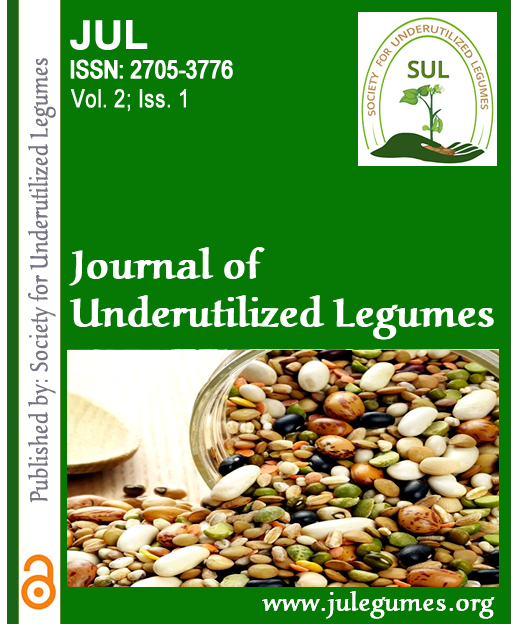Economic analysis of soybean production in Ibarapa Zone of Oyo State, Nigeria
Keywords:
Soybean, Oyo State, underutilized legume, crop managementAbstract
There is growing believe that Soybean is not only supplying protein to the diet of Nigeria people but also contributes immensely to the economic development of rural farmers. Therefore, this study instigated the economics of Soybean in Ibarapa zone of Oyo State, Nigeria. Ibarapa zone of Oyo Stateis mainly agrarian area with over 90% of its population engaged directly or indirectly in crop productions. Multi-stage sampling method was adopted to select 160 Soybean farmers. Data collected were analysed using descriptive statistics (frequency table, percentages, mean) and inferential statistics (t-test, Gross margin, multiple regression). The result revealed that majority (91.88%) of the farmers was males and their average age was 49years. Majority of the farmers (73.12%) had no formal education and engaged primarily (71.25%) on crop production. They were mostly married (88.13%) with average of 6 persons per household. It was observed that the challenges faced by the farmers were; pest infestations, high cost of pesticides, herdsmen destructive activities, low yield, high labour cost, insufficient capital among others. The t-test showed significances different between male and female farmers in terms of farm size, years of experience and revenue generated. The gross margin (GM) was? 377,106.41 With the average profit of ?230,530.11 and Benefit Cost Ratio (BCR) of 1.63. Regression analysis showed that level of education (P= 0.063), years of experience (P= 0.080), farm size (P= 0.000), labour used (P= 0.095), and chemical used (P= 0.000) have positive significant effect on the revenue while pest infestation (P=0.001) has negative effect. In conclusion, this study provided strong evidence that soybean cultivation is a profitable venture with profit margin of about 60%. It is recommended that farmers should engage in commercial production of soybean and seed breeders should develop pest and disease resistance varieties.
Downloads
Published
Issue
Section
License
Copyright (c) 2020 Rasaki et al.

This work is licensed under a Creative Commons Attribution 4.0 International License.




